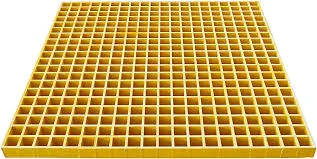
-
 Afrikaans
Afrikaans -
 Albanian
Albanian -
 Amharic
Amharic -
 Arabic
Arabic -
 Armenian
Armenian -
 Azerbaijani
Azerbaijani -
 Basque
Basque -
 Belarusian
Belarusian -
 Bengali
Bengali -
 Bosnian
Bosnian -
 Bulgarian
Bulgarian -
 Catalan
Catalan -
 Cebuano
Cebuano -
 China
China -
 China (Taiwan)
China (Taiwan) -
 Corsican
Corsican -
 Croatian
Croatian -
 Czech
Czech -
 Danish
Danish -
 Dutch
Dutch -
 English
English -
 Esperanto
Esperanto -
 Estonian
Estonian -
 Finnish
Finnish -
 French
French -
 Frisian
Frisian -
 Galician
Galician -
 Georgian
Georgian -
 German
German -
 Greek
Greek -
 Gujarati
Gujarati -
 Haitian Creole
Haitian Creole -
 hausa
hausa -
 hawaiian
hawaiian -
 Hebrew
Hebrew -
 Hindi
Hindi -
 Miao
Miao -
 Hungarian
Hungarian -
 Icelandic
Icelandic -
 igbo
igbo -
 Indonesian
Indonesian -
 irish
irish -
 Italian
Italian -
 Japanese
Japanese -
 Javanese
Javanese -
 Kannada
Kannada -
 kazakh
kazakh -
 Khmer
Khmer -
 Rwandese
Rwandese -
 Korean
Korean -
 Kurdish
Kurdish -
 Kyrgyz
Kyrgyz -
 Lao
Lao -
 Latin
Latin -
 Latvian
Latvian -
 Lithuanian
Lithuanian -
 Luxembourgish
Luxembourgish -
 Macedonian
Macedonian -
 Malgashi
Malgashi -
 Malay
Malay -
 Malayalam
Malayalam -
 Maltese
Maltese -
 Maori
Maori -
 Marathi
Marathi -
 Mongolian
Mongolian -
 Myanmar
Myanmar -
 Nepali
Nepali -
 Norwegian
Norwegian -
 Norwegian
Norwegian -
 Occitan
Occitan -
 Pashto
Pashto -
 Persian
Persian -
 Polish
Polish -
 Portuguese
Portuguese -
 Punjabi
Punjabi -
 Romanian
Romanian -
 Russian
Russian -
 Samoan
Samoan -
 Scottish Gaelic
Scottish Gaelic -
 Serbian
Serbian -
 Sesotho
Sesotho -
 Shona
Shona -
 Sindhi
Sindhi -
 Sinhala
Sinhala -
 Slovak
Slovak -
 Slovenian
Slovenian -
 Somali
Somali -
 Spanish
Spanish -
 Sundanese
Sundanese -
 Swahili
Swahili -
 Swedish
Swedish -
 Tagalog
Tagalog -
 Tajik
Tajik -
 Tamil
Tamil -
 Tatar
Tatar -
 Telugu
Telugu -
 Thai
Thai -
 Turkish
Turkish -
 Turkmen
Turkmen -
 Ukrainian
Ukrainian -
 Urdu
Urdu -
 Uighur
Uighur -
 Uzbek
Uzbek -
 Vietnamese
Vietnamese -
 Welsh
Welsh -
 Bantu
Bantu -
 Yiddish
Yiddish -
 Yoruba
Yoruba -
 Zulu
Zulu
High-Performance CPVC FRP Pipe for Enhanced Durability and Efficiency in Fluid Transport
Understanding CPVC and FRP Pipes A Comprehensive Overview
In the realm of modern plumbing and industrial applications, the choice of piping materials has become critical to system efficiency, durability, and safety. Two materials that have gained considerable attention are Chlorinated Polyvinyl Chloride (CPVC) and Fiber Reinforced Plastic (FRP) pipes. This article explores the characteristics, advantages, and applications of both CPVC and FRP pipes, highlighting why they are often preferred in various settings.
What is CPVC?
Chlorinated Polyvinyl Chloride (CPVC) is a thermoplastic produced by the chlorination of polyvinyl chloride (PVC). This process enhances the thermal stability of PVC and expands its application range due to improved resistance to heat and chemical corrosion. CPVC pipes are commonly used in hot and cold water distribution systems, particularly in residential and commercial plumbing.
Key Benefits of CPVC Pipes
1. High Temperature Resistance CPVC can handle temperatures up to 200°F (93°C), making it suitable for hot water applications. 2. Corrosion Resistance Unlike traditional metal pipes, CPVC is highly resistant to rust and corrosion, which extends the life of plumbing systems.
3. Ease of Installation CPVC pipes are lightweight and easy to work with. They can be easily cut and joined using solvent cement, reducing installation time.
4. Cost-Effectiveness In comparison to metal alternatives, CPVC pipes are less expensive both in material costs and installation efforts.
5. Low Thermal Conductivity CPVC pipes do not conduct heat, helping to maintain the temperature of the fluid inside, leading to energy savings.
What is FRP?
Fiber Reinforced Plastic (FRP) is a composite material made from a polymer matrix combined with fibers—such as glass, carbon, or aramid. This composition gives FRP pipes several unique properties that make them particularly advantageous for industrial applications.
cpvc frp pipe

Key Benefits of FRP Pipes
1. High Strength-to-Weight Ratio FRP pipes are extremely strong yet lightweight, making them easy to transport and install.
2. Outstanding Corrosion Resistance The materials used in FRP construction provide excellent resistance to a wide range of chemicals, making them suitable for aggressive environments.
3. Flexibility in Design FRP can be molded into various shapes and sizes, offering design flexibility that meets specific project requirements.
4. Low Maintenance The durability and corrosion resistance of FRP lead to lower maintenance costs over time.
5. Thermal Insulation FRP pipes provide natural insulation, minimizing energy losses for temperature-sensitive applications.
Applications
CPVC pipes are ideal for residential and commercial plumbing systems where hot and cold water distribution is essential. Their compliance with building codes and regulations further enhances their usability in various plumbing scenarios. On the other hand, FRP pipes are predominantly utilized in industrial settings, such as chemical processing plants, wastewater treatment facilities, and oil and gas industries, due to their ability to handle corrosive fluids and high-pressure environments.
Conclusion
Both CPVC and FRP pipes play vital roles in the modern infrastructure and industrial sectors. While CPVC is favored for its reliability and cost-effectiveness in plumbing applications, FRP is chosen for its strength and corrosion resistance in demanding industrial environments. When selecting piping materials for a project, it is essential to consider specific needs, including temperature, pressure, and the nature of the fluids they will transport. By understanding the unique benefits of CPVC and FRP, stakeholders can make informed decisions that enhance their systems' efficiency and longevity.









